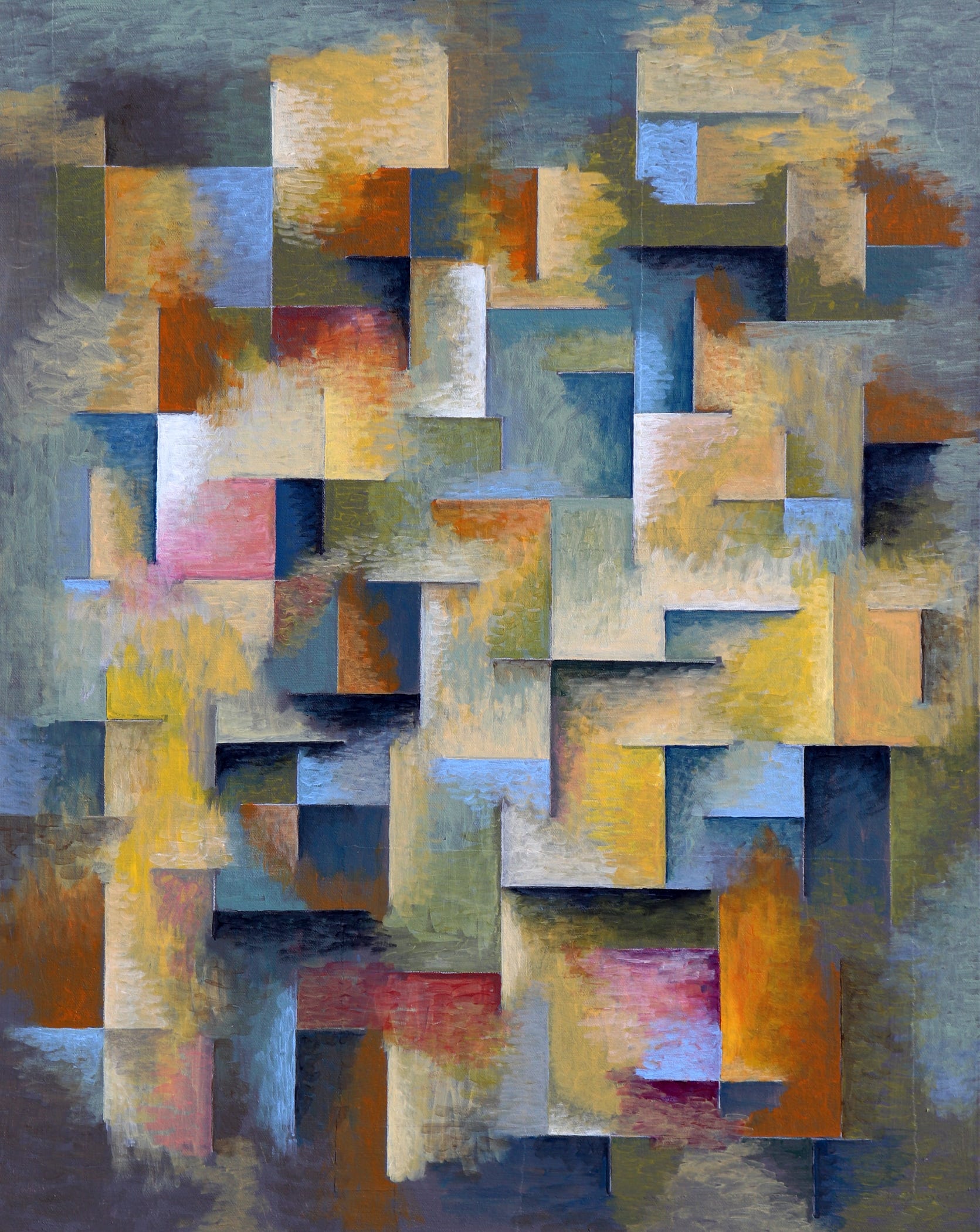This painting is part of my musicality experiments, the idea here was to draw a series of randomly placed perpendicular horizontal and vertical lines with white pencil on a gray background and then flesh out the spaces in between with patches of color and tone.
I am thinking about light and dark, warm and cool colors pushing or pulling the space deeper into the gray or coming forward from the gray. According to my current theory the background color needs to be about a #5 gray or the equivalent in some other neutral color to represent a kind of silence or equilibrium from which the musical image emerges through an interplay of lights and darks.
With the idea of musicality you need to be able to locate shapes and forms in space related to other forms. This way you can have different sets of lines and movements be in the background or come to the foreground. In music there is a constant interplay between what is prominent like the melody and what is supporting or what might be a background texture. But musically they interpenetrate each other to make the harmonies. I am trying to represent this idea of transparency and interpenetration in the musical paintings so that, as one motif interacts with another they create new forms and colors and tones.
I am thinking about a book on the topic and want to lead a reader through the process of how to look at my visual musicality works. In this painting I am working with a single element - a series of strait lines - and then showing the kinds of things I can do with it to establish a simple motif, rhythm, space, color, tonality, etc.
This painting also explores the concept of ‘passage’. In Cubist painting, a "passage" refers to the technique of blending and overlapping different planes and shapes, creating a sense of fluidity between them. This approach breaks down the boundaries between objects and space, allowing forms to interpenetrate each other in a way that suggests multiple viewpoints simultaneously. The term often describes how colors, lines, and textures transition smoothly, making it difficult to distinguish where one element ends and another begins, contributing to the fragmented and dynamic quality characteristic of Cubist works.
Passage helps to destroy the sense of visual solidity and increase the sense of musicality or visual dynamics. The more solid and cohesive a visual object appears the more it slows down the visual speed and fluidity of the dynamic quality. The eye needs to be led around a musical painting to allow the mind to acquire the image over time instead of in one instantaneous fell swoop. This type of painting is depending on the movement of the focal point of the eye around the painting to gain a ‘reading’ of it and let it build up in your mind like we do with orchestral music.
One experiment in this painting was to use the same color in a variety of different surroundings and contexts to see the shift in how that color interacts under these different conditions. For instance look at the light blue color patches and see how they shift and change based on their surroundings.




Thanks for all the recent posts. I’ve enjoyed reading them and seeing your work. Been busy with family and so not much time to comment. But enjoyed reading always lots to think about.
This is a painting one can look at and study (or merely allow it be absorbed by the viewer) for a long time. It has so much going on in it......the various chosen colors, how they react to one another, the shadows, shapes, and the entire dimensions of the piece as a whole and each individual shape. For me it's intriguing because it's not a flat-looking bunch of vertical/horizontal shapes but my mind wants to look 'behind' each shape to see where it's coming from. This painting grows on me the more I view it.